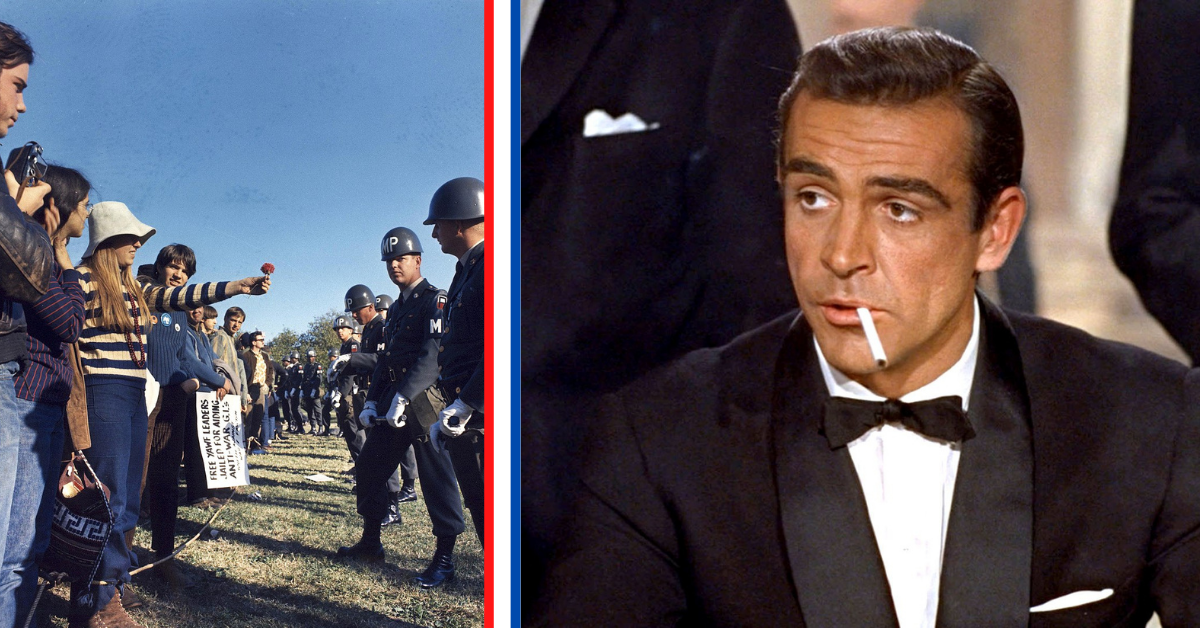How Operation CHAOS let the CIA play James Bond

SUMMARY
When you think of the CIA, James Bond-esque escapades might come to mind, but this real-life saga put the spy agency in a controversial spotlight right on American soil.
Launched in 1967, Operation CHAOS aimed to track down possible foreign influence on domestic protest movements against the Vietnam War. Then-CIA Director Richard Helms authorized the program under President Lyndon B. Johnson, and it continued until 1974. Spoiler alert – Helms wasn’t exactly the most well-liked CIA director in history. But more on that later. CHAOS involved illegal surveillance, mail tampering and infiltrating anti-Vietnam War and civil rights groups. It amassed thousands of files on American citizens who were never accused or suspected of a crime.
The inner workings of Operation CHAOS
Picture the United States in the late 1960s. The airwaves buzzed with news of protests against the Vietnam War and for civil rights. Campuses like UC Berkeley and Columbia University were practically boiling over with student demonstrations. The powers that be were nervous, really nervous. Amid the swirl of social unrest, government officials began to worry that these dissenting voices weren't just homegrown. The cloud of paranoia thickened as fingers pointed toward foreign culprits—specifically, the Soviet Union and Communist China. The belief was that these countries were fueling the fires of domestic discord to weaken the United States.
Spy gadgets meet constitutional challenges
When it comes to Operation CHAOS, the spooks didn't skimp on their spy gear. While we might laugh today at what now seems like primitive tech, back in the day, it was cutting-edge cloak-and-dagger stuff. Picture this: wiretaps so advanced for their time that they could remotely turn on your home phone's microphone, effectively turning it into a room bug. They even developed disguised antennas to avoid detection while snooping. It's like Q from James Bond moonlighted as a CIA tech advisor.
Now, let's delve into the mail interception program. Agents used what were known as "covers," secret locations where mail was sent to be opened and analyzed. They didn't just skim these letters. They went so far as to photograph them and build an archive. Imagine your personal letters, full of heart, dreams, or maybe youthful rebellion, getting clicked and cataloged by some suit in a nondescript room.
What about human assets? Undercover agents were the crown jewel in the CIA's toolkit. Agents would establish credibility within the group, sometimes rising to leadership roles, and guide actions to discredit the organization. They were so effective that some activists still don't know the true identities of these agents.
So, what's the scorecard? The CIA utilized wiretaps, advanced for the era, to turn homes into hot mics. They went through thousands of letters, building a creepy archive, and they used undercover agents not just to spy but also manipulate. All this targeted against Americans who were, for the most part, just exercising their First Amendment rights. Talk about a constitutional quagmire.
What did Operation Chaos do?
If you think Operation CHAOS was just about collecting data, think again. This program had real-life consequences for everyday Americans.
Student activists found themselves on "watch lists," which had chilling effects on their academic and professional lives. Picture being an 18-year-old, passionate about social change, and suddenly, you can't get a job because you're flagged in some secret CIA database.
Activists weren't the only casualties. Journalists who reported on civil rights or anti-war movements also came under scrutiny. They faced wiretaps and intimidation, leading to self-censorship and a less informed public. In essence, Operation CHAOS didn't just target suspected dissidents; it cast a wide net that snagged anyone who dared question the status quo.
However, this did lead to significant reforms. The Foreign Intelligence Surveillance Act (FISA) was enacted in 1978 to provide judicial oversight of surveillance activities. Intelligence operations now had to get a warrant for wiretapping and other forms of spying on U.S. soil.
But the question of surveillance never really disappeared. With the advent of the internet and the era of Big Data, agencies like the NSA have been embroiled in modern surveillance controversies. You can draw a straight line from Operation CHAOS to the Patriot Act. It's a grim reminder that the ethical debates ignited by Operation CHAOS are still relevant.
Eyes wide open
In a time when information flows like water and data privacy is under constant threat, Operation CHAOS remains a relevant episode in American history. For young folks interested in military and intelligence matters, it's a must-know event, a sobering look at what can go wrong when the guardians become the trespassers.
Knowing about Operation CHAOS equips us to ask critical questions about the reach of government agencies into our private lives today. It serves as a stark lesson that keeps both citizens and intelligence agencies on their toes, reminding everyone that the eyes watching you might need watching too.
SHARE
